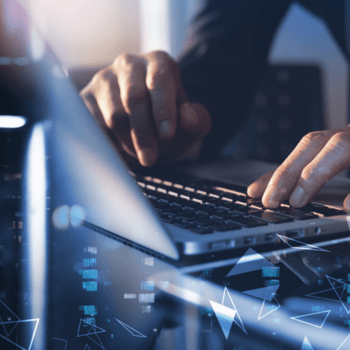Insights


Featured insights


 Industries
All Industries
Industries
All Industries
Deep industry knowledge Is central to our value proposition for clients. Our teams understand the Industry-specific Issues and opportunities that can drive competitive advantage and Improve business performance.
Explore Our Industries All Industries
All Industries
Deep industry knowledge Is central to our value proposition for clients. Our teams understand the Industry-specific Issues and opportunities that can drive competitive advantage and Improve business performance.
Explore Our Industries Consumer & Industrial
Consumer & IndustrialWith integrated teams focused on the consumer, hospitality, and manufacturing and distribution industries, we’ll help you leverage process innovation, manage growth capital, and support your brand strategy.
Consumer and Industrial Financial Sponsors & Services
Financial Sponsors & ServicesWe provide award-winning advisory, tax, and compliance services supporting the entire investment management ecosystem –private equity firms and portfolio companies to hedge funds and independent sponsors.
Financial Sponsors & Services Healthcare
HealthcareHealthcare organizations face numerous business and financial challenges in today's marketplace. We provide the strategic advisory, audit, and tax solutions that can help you improve operations and enhance patient care.
Healthcare Life Sciences
Life SciencesRegulated industries require top-notch accounting, compliance, and advisory services to attract capital and maintain regulatory compliance. We support life sciences companies, including those backed by venture and private equity, in managing growth across their life cycles.
Life Sciences Private Clients
Private ClientsHigh-net-worth individuals, families, and specialized professional services businesses have distinct tax and accounting needs requiring a hands-on service approach. Learn how we help private clients protect and grow their assets.
Private Clients Public Sector
Public SectorHelping government agencies, contractors, and not-for-profit organizations manage taxpayer and donor funding requires highly specialized experience. We help public sector clients navigate risk, maintain compliance, and administer programs that benefit society.
Public Sector Real Estate
Real EstateWithin our largest practice group, we support community development involving both market rate and tax incentivized properties. Developers, lenders, and governmental entities rely on CohnReznick for our unmatched real estate expertise.
Real Estate Renewable Energy
Renewable EnergyFrom complex wind and solar transactions to tax equity and infrastructure advisory, we help renewable energy stakeholders create financially sound, sustainable businesses. Our solutions support developers, IPPs, EPCs, utilities, tax equity investors, and private equity funds.
Renewable Energy Technology & Media
Technology & MediaInnovation is the lifeblood of global commerce. We help emerging and established tech and media companies maintain compliance, complete transactions, and drive revenue through tax incentives, licensing, and royalty agreements.
Technology & Media Services
All Services
Services
All Services
Providing comprehensive industry-centered advisory, assurance, and tax solutions, our integrated approach helps you improve performance, drive business value, and successfully manage risk.
All Services All Services
All Services
Providing comprehensive industry-centered advisory, assurance, and tax solutions, our integrated approach helps you improve performance, drive business value, and successfully manage risk.
All Services Accounting & Assurance
Accounting & AssuranceDelivering comprehensive Accounting and Assurance services, we enhance financial reporting confidence, promote transparency, and address stakeholder issues.
Accounting & Assurance Accounting Advisory
Accounting AdvisoryOur Accounting Advisory team helps businesses navigate the challenging accounting environment with astute practices that focus on achieving your organization's goals.
Accounting Advisory Business Performance
Business PerformanceFrom focused Improvements for a specific business function to a full transformation that redefines your operations, our advisors can help you achieve game-changing results.
Business Performance Digital
DigitalWith deeply skilled professionals and best-in-class technologies, CohnReznick’s Digital team helps organizations identify and mobilize the people, processes, technology, and strategy needed to best manage their information, support their long-term goals, and gain competitive advantage.
Digital Risk
RiskLeveraging top-tier risk management, industry expertise, and innovative cybersecurity technologies, we evaluate risks, analyze threats, and create cost-effective security and governance procedures.
Risk Sustainability Advisory
Sustainability AdvisoryHelping our clients build more sustainable, resilient businesses Is front and center in what we do. Our methodology considers the environmental, social, and governance issues that matter to your stakeholders.
Sustainability Advisory Tax
TaxBy implementing proactive strategies driven by a team with wide-ranging tax knowledge, we can help you reduce tax risk and maximize eligible tax reduction benefits.
Tax Transactions
TransactionsMany businesses look to accelerate growth through transactions like mergers, acquisitions, or sales. CohnReznick's skilled advisors offer comprehensive support throughout the transaction lifecycle.
Transactions Insights
All Insights
Insights
All Insights
Sharing perspectives from our subject matter experts on the trends and Issues that matter to our clients extends our value proposition. Explore videos, articles, and other resources designed for today’s business leaders.
All Insights All Insights
All Insights
Sharing perspectives from our subject matter experts on the trends and Issues that matter to our clients extends our value proposition. Explore videos, articles, and other resources designed for today’s business leaders.
All Insights Topics
TopicsExplore the issues and topics across various sectors that industry leaders are talking about.
 Events
EventsConnect with business leaders on topics that impact your industry. Join our live events, webinars, and discussion forums.
Events Subscribe
SubscribeSubscribe to receive CohnReznick insights and event invitations on topics that matter for your business and role.
Subscribe About us
About CohnReznick
About us
About CohnReznick
Driven by purpose. Committed to corporate responsibility. Learn about CohnReznick and the ways we can deliver value to your business.
Learn More About Us About CohnReznick
About CohnReznick
Driven by purpose. Committed to corporate responsibility. Learn about CohnReznick and the ways we can deliver value to your business.
Learn More About Us Corporate Responsibility
Corporate ResponsibilityCohnReznick recognizes that being a trusted employer and business advisor is paramount. By operating with a heightened sense of responsibility and advancing sustainability Initiatives, we believe our actions impact not only key stakeholders but society as a whole.
Corporate Responsibility News
NewsExplore our latest media commentary, press releases, industry awards, and more in the CohnReznick news hub.
News Offices
OfficesFind out where we operate from various locations across the United States and around the world, with offices strategically located in major U.S. business centers.
Offices People
PeopleLearn how the convergence of backgrounds, knowledge, and geographic perspectives of our team members provides the diversity of thought and experience critical to our clients' successes.
People Careers
Careers at CohnReznick
Careers
Careers at CohnReznick
See how far your talent can take you. Join our growing team of advisory, assurance, and tax professionals.
Explore Career Opportunities Careers at CohnReznick
Careers at CohnReznick
See how far your talent can take you. Join our growing team of advisory, assurance, and tax professionals.
Explore Career Opportunities Experienced Career Opportunities
Experienced Career OpportunitiesSeek opportunities to contribute, build connections, and enhance your skills. Explore current job listings that align with your seasoned skills and interests.
Experienced Career Opportunities Careers at CohnReznick
Careers at CohnReznickSee how far your talent can take you. Join our growing team of advisory, assurance, and tax professionals.
Early Career Opportunities Internships
InternshipsGet a glimpse of the real world and gain valuable experience to help envision a future in professional services through our internship opportunities at CohnReznick.
Internships Life at CohnReznick
Life at CohnReznickSee what defines the CohnReznick experience -an unlimited career trajectory, collaboration with colleagues and clients, and harmony between your work life and personal life.
Life at CohnReznick Why CohnReznick?
Why CohnReznick? As a certified Great Place to Work and one of Newsweek’s Most Loved Workplaces, learn how you can find your “why” at CohnReznick.
Why CohnReznick? Contact us
Contact us
Have a question or request? Looking to contact a partner? Want more information on our services or an upcoming event?
Contact us today
Have a question or request? Looking to contact a partner? Want more information on our services or an upcoming event?
Contact us today





